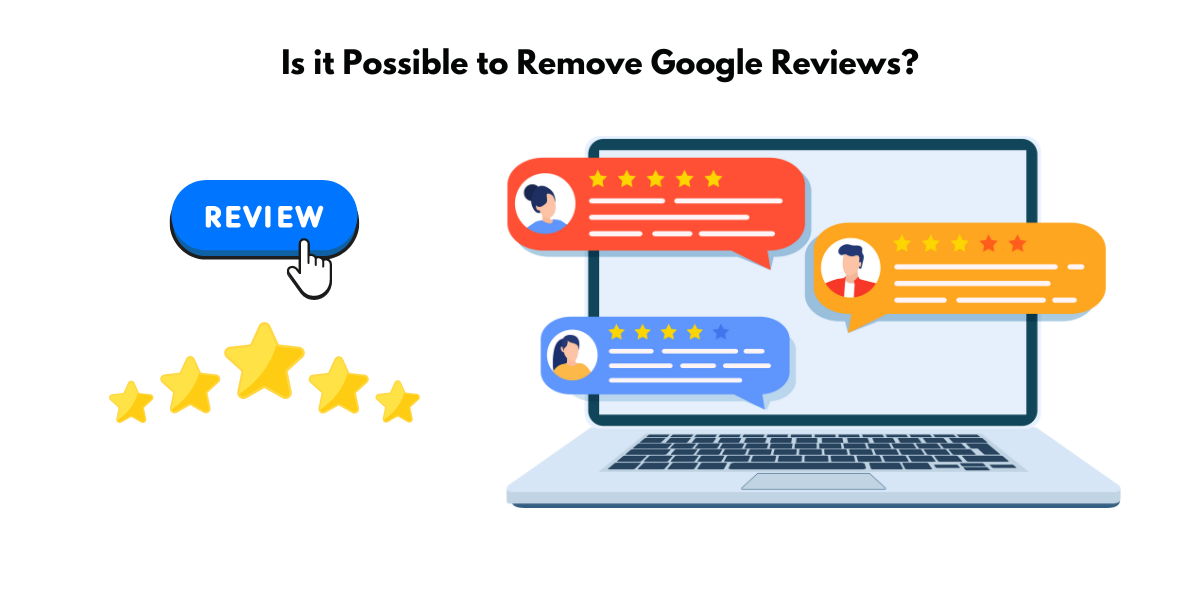Understanding Google Reviews
The Power of Google Reviews for Businesses
Imagine your business is a book and Google reviews are the back-cover blurbs—it’s often where people flip to first before deciding to engage. The power these reviews wield is no secret; they act as digital word-of-mouth, influencing potential customers before they even set foot in your location or try your product. According to research by BrightLocal, a whopping 91% of consumers read online reviews, and 84% of them trust these reviews as much as a personal recommendation. These numbers highlight how Google reviews can be a game-changer, setting up your business for trust, credibility, and a boost in local SEO.
Common Concerns About Negative Reviews
Negative reviews can cause almost any business owner to break out in a cold sweat. They raise common concerns such as tarnished reputation, lost revenue, and the potential for a minor complaint to become a viral nightmare. Here’s the lowdown: first, it’s natural for a business to receive a mix of positive and negative feedback. Perfection is unattainable, so the occasional critique is almost unavoidable. Second, they aren’t always the end-of-days scenario you might imagine—they can be opportunities. A well-handled negative review can even flip the script, showing that you’re committed to customer satisfaction.
Lastly, balance is key. A sprinkling of less-than-perfect reviews among many positives can even lend authenticity, reassuring customers that they are reading genuine experiences rather than a curated fantasy. Keep in mind, though, that a lone negative review can stand out like a sore thumb if it’s one of only a few. So, aim for quantity and quality in your reviews.

The Truth About Removing Google Reviews
Is it Possible to Remove Google Reviews?
Yes, it is possible to remove Google reviews, but not by merely waving a magic wand. Google doesn’t offer a direct “delete” button for you to use whimsically. However, they do understand that not every review is fair or follows their guidelines. To keep the integrity of the review system, Google allows business owners to report reviews that violate their policies. For example, if you encounter fraudulent reviews, spam, off-topic, or contain offensive content, you have the right to flag them for removal. The process involves a review by Google, and if they agree that the content breaches their policies, they may remove it. The key here is understanding what qualifies for removal and how to report it correctly, making the distinction between simply unflattering reviews and those that are in violation.
When Can Google Reviews be Removed?
Google has set precise criteria for when a review can be removed, and you must familiarize yourself with them to know when you can take action. A review is up for removal if it falls into any of these categories:
- Spam or fake content – If the review seems to come from a bot or fake accounts with no real customer experience.
- Off-topic reviews – Reviews that are irrelevant to your business or personal rants.
- Restricted content – Anything that involves illegal activities or violates legal restrictions.
- Illegal content – Any review that suggests or promotes illegal actions.
- Terrorist content – Anything related to terrorist activities or support.
- Sexually explicit content – Reviews that include explicit sexual content.
- Offensive content – Including but not limited to racist, bigoted, or hate speech.
- Dangerous and derogatory content – Content that could be harmful or disrespectful.
- Impersonation – If someone pretends to be someone else, including a competitor or your business.
- Conflicts of interest – Reviews by those with personal or professional ties to your business that could bias their opinions.
Understanding these reasons well is your safeguard. They provide the framework to justify the removal of a Google review and ensure fair play in the great game of online reputation management.

How to Deal with Unwanted Google Reviews
The Step-by-Step Process to Report a Review
When faced with a problematic review, you’re not powerless. Here’s a concise, step-by-step process to report it:
- Locate the offending review within your Google My Business account or directly on Google Maps.
- Click on the three vertical dots next to the review to access more options.
- Select ‘Flag as inappropriate’ to report the review to Google.
That’s the start, but be patient—it can take several days for Google to assess your request. If after a reasonable timeframe, the review remains, consider reaching out to Google My Business Support for further assistance. Also, have on hand any evidence, like customer records, that may bolster your claim that the review does not reflect a genuine customer experience or violates the guidelines.

Proactive Measures to Protect Your Online Reputation
Proactive measures are your first line of defense in maintaining a stellar online reputation. Begin by building a robust profile on Google My Business—accurate information and regular updates are key. Encourage satisfied customers to leave reviews to outweigh the occasional negative ones. Train your staff to ask for feedback post-service or transaction, as genuine customer interactions are the perfect moment to request a review.
Monitoring your online presence is also pivotal. Set up alerts for when your business is mentioned or reviewed online. Respond promptly to all feedback, positive and negative, to show engagement and commitment to service quality.
To further buffer your online standing, diversify your reviews across different platforms, such as Yelp or TripAdvisor, and integrate positive reviews on your website or in marketing materials. An active social media presence can also enhance your image and offer an alternative platform for customer endorsements.
Lastly, consistency is critical. Regularly review your online reputation management strategy to adapt to changing customer behavior or updates to platform policies or features.
What Not to Do: Common Mistakes in Handling Reviews
Buying or Faking Reviews – Why It’s a Bad Idea
Venturing down the slippery slope of buying or faking reviews is a bad idea, and here’s why. First off, it’s against Google’s terms of service, which is reason enough. Doing so can lead to severe consequences such as the removal of all your reviews or even penalization from Google. Additionally, customers have become savvier and can often sniff out insincerity; a slew of five-star reviews that read like ad copy might even raise suspicion rather than build trust.
Furthermore, regulators are on high alert. Engaging in such deceptive practices could attract the unwanted attention of government agencies, potentially resulting in hefty fines. From an ethical standpoint, it’s a no-go as well. Authenticity is crucial in today’s market and audiences value transparency. Practicing honesty not only maintains the integrity of your business but also respects your customers. A single purchased fake review might seem harmless in the short term, but it jeopardizes the long-term trust you’re looking to build with your audience.

Ignoring the Feedback – A Missed Opportunity for Improvement
Ignoring feedback might seem like the path of least resistance, but it’s a missed opportunity for growth and engagement. When you overlook what customers are saying, you’re essentially turning a blind eye to their experiences—which could be a goldmine for improvement. Each piece of feedback, especially the critical ones, acts as a mirror reflecting not just what you’re doing wrong, but also what you could be doing right.
Plus, engaging with feedback is a public display of your customer service ethos. It demonstrates that you value their voice, and it builds rapport with not just the reviewer but also prospective customers who notice your active participation. Moreover, sometimes, simply acknowledging and responding to a review can turn a dissatisfied customer into a loyal advocate.
Remember, when you ignore feedback, you’re also saying ‘no’ to a chance to get better. Like a lost explorer ignoring a compass, you might find your business wandering off course and missing critical insights that could have led to success.
Legal Considerations in Managing Online Reviews
Defamation and Fraudulent Reviews – When to Take Legal Action
Taking legal action is a serious move and is typically the last resort when dealing with defamation or fraudulent reviews. If a review contains false statements that harm your business reputation, and you have substantial evidence, you might consider this option. When the review crosses the line from opinion to libel—meaning it’s not just negative but falsely damaging—you have grounds to act.
Before going down the legal route, exhaust all other options, like flagging the review with Google or attempting to resolve the issue directly with the reviewer. If these avenues fail and you believe the review is causing significant damage, consult with a legal expert specializing in Internet law to assess your case and determine the best course of action.
Legal battles can be costly and time-consuming, so weigh the potential reputation damage against the resources you’ll need to commit. It’s about finding the tipping point where the review’s harm to your business outweighs the cost and effort of the legal proceedings.

Policies and Guidelines – Staying Within Legal Boundaries
Staying within legal boundaries when managing online reviews is crucial and relatively straightforward if you adhere to the established policies and guidelines. Google’s review guidelines, which are quite clear, should be your roadmap for navigating this territory. These rules forbid fraudulent content, irrelevant contributions, illegitimate or biased reviews, and inappropriate content, among other things. Knowing these policies inside out ensures you don’t accidentally violate them yourself or wrongly accuse others of infractions.
Additionally, it’s wise to have a policy for your team on how to interact with reviews and reference user feedback in marketing materials. Adopting guidelines such as the FTC’s Endorsement Guides will help ensure that testimonials and endorsements in advertising reflect honest opinions, findings, or experiences.
Remember to keep transparency at the forefront; never suggest that customers can only leave positive reviews, and avoid “review gating” — filtering out negative reviews before they’re posted. When in doubt, lean on the side of caution, as violations can result in penalties from both the review platform and legal authorities.
Best Practices for Positive Engagement
Encouraging Happy Customers to Review
Encouraging happy customers to review your business can amplify your credibility and attract more patrons. A simple yet effective strategy is to just ask! Most customers understand the value of reviews and, when asked politely after a positive experience, they’re often willing to share their thoughts. Make it as easy as pie for them to leave a review by providing direct links or QR codes.
Leverage moments of customer satisfaction, like post-service compliments or positive feedback via email, as cues to request a review. You might even implement a system that automates the request process after a purchase or service is completed.
The key to success here is timing and convenience. A request coming right after a delightful experience, given with a smile and expressed gratitude, can turn a willing customer into a vocal advocate.

Responding Appropriately to Negative Critiques
A negative critique can feel like a sting, but responding to it appropriately is a chance to showcase impeccable customer service. Take some time to cool off and collect your thoughts before replying. When you do respond, do so swiftly and professionally, addressing the points raised in the review and expressing genuine concern. It’s important to avoid a defensive tone; instead, view the feedback as constructive, even if it’s presented harshly.
Apologize for any genuine dissatisfaction or misunderstandings and offer a route to a resolution, such as inviting the reviewer to a private conversation to discuss the altercation further. Not only can this approach potentially rectify an individual situation, but it also publicly demonstrates to prospective customers that you are approachable and committed to resolving issues.
The way you respond to negative reviews can turn a critic into a fan and can even be more powerful than the review itself. After all, everybody makes mistakes, but not everyone takes the opportunity to make things right.
Summary
Google reviews are very important for a business’s online reputation, but unhappy customers often leave negative feedback. Business owners can’t delete these reviews themselves to keep the review system honest.
There are two ways to try and remove a negative review: by resolving the issue with the customer so they delete it, or by flagging the review as inappropriate if it violates Google’s policies. When reporting, you must explain how the review breaks the rules.
To report a negative review on Google Maps, find your business listing, click on the review, and choose ‘report review’. Explain the policy violation and submit it for Google to check. Google only removes reviews that break their policies, like irrelevant or illegal content, offensive language, conflicts of interest, or fake reviews.
- Insider Secrets: Can You Remove Google Reviews Posted By Others? - April 17, 2024



![Manage Reputation Online: [5 facts] you need to know about reputation managers](https://www.profilemonk.com/wp-content/uploads/2022/06/managing-reputation-online-who-are-reputation-managers-and-what-are-their-responsibilities-768x384.png)



